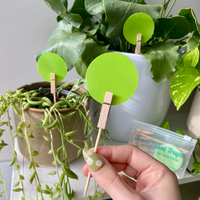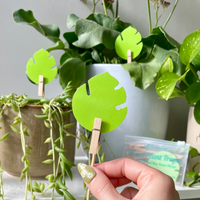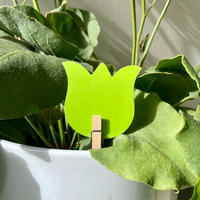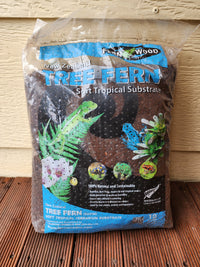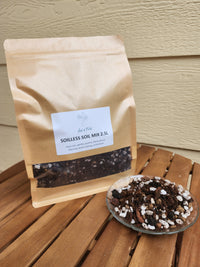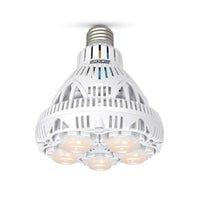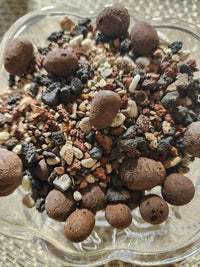Did you know that many common houseplant issues can be linked to imbalances in their immediate environment—often caused by excess moisture, poor airflow, or unnoticed insect activity? Sticky traps offer a simple, non-toxic way to help you observe what’s happening around your plants and maintain a more balanced growing space. We’ll walk you through what sticky traps are and how they work, outline their benefits for indoor plant care, share tips for placement and replacement, and explain how they can support a more thoughtful, well-rounded plant care routine.
What Are Sticky Traps and How Do They Work?
Sticky traps are simple cards coated with a long-lasting adhesive designed to capture small flying insects commonly found near indoor plants. These insects are naturally drawn to certain visual cues and tend to hover around leaves, soil, and light sources. By placing traps close to plant pots or on the rim of containers, you can observe insect activity early and take action before it affects your plant's health. For example, spotting a few trapped insects near a wilting fern can help you adjust your care routine and protect root systems from further stress.
Why Use Sticky Traps Around Indoor Plants?
Sticky traps offer a non-toxic, low-effort way to support plant care—especially in environments where tiny insects can go unnoticed until damage sets in. Rather than reacting to visible decline in foliage, traps allow for early detection of flying insects that may interfere with healthy growth. This helps you make informed decisions about watering, soil, and airflow.
How Visual Traps Complement Indoor Plant Care
Many flying insects use light and visual contrasts to locate plants. Sticky traps take advantage of this natural behaviour, providing a safe and effective way to monitor what’s happening around your plants without disrupting their environment. This passive form of monitoring can reveal patterns in insect presence, making it easier to maintain strong, resilient greenery over time.
How Does the Sticky Surface Trap Flying Insects Effectively?
A non-drying adhesive layer forms an instant bond when insects land, preventing escape and reproduction. The trap’s tacky film remains potent for weeks, capturing successive generations. This continuous removal reduces adult populations and disrupts life cycles without chemicals, preserving beneficial organisms in your home.
What Are the Key Benefits of Using Sticky Traps for Indoor Plants?
Sticky traps offer multiple advantages in one easy-to-use tool:
- They provide a non-toxic way to support plant health, without relying on sprays or synthetic treatments—ideal for homes with children and pets.
- They allow for early awareness of insect activity, giving you the chance to respond before your plants show signs of stress.
- They help maintain a clean, balanced growing environment, especially in spaces where airflow and moisture can vary.
By using sticky traps as part of your plant care routine, you’re choosing a gentle, low-impact solution that aligns with natural indoor living.
Are Sticky Traps Safe to Use Around Kids and Pets?
Yes. Sticky traps work through physical capture, not chemicals—there are no fumes, residues, or toxic ingredients involved. That makes them a safe option for use in family spaces, near pet zones, or anywhere you’re growing indoor greenery. Leaf of Faith chooses products made with non-toxic, low-odour adhesives to give you peace of mind while caring for your plants.
Non-Toxic Pest Control Methods
Research emphasises the importance of non-toxic pest control methods for protecting both human and animal health. These methods, like yellow sticky traps, avoid the use of harmful chemicals, making them safe for use in homes with children and pets.
How Do Sticky Traps Support Early Plant Monitoring and Care?

Sticky traps offer a simple way to observe insect activity around your plants. By capturing flying insects before they have a chance to affect soil or foliage, traps provide real-time feedback on changes in your plant environment. Gardeners can use capture trends as a guide—helping them decide when to adjust care routines such as airflow, watering, or soil management.
Which Flying Insects Are Commonly Detected Around Indoor Plants?
Sticky traps can help detect a range of small flying insects often found near potted plants, including those that linger around damp soil or feed on leaves. These include fungus gnat adults, aphid flyers, and others that can be difficult to spot with the naked eye. Regular use of traps helps reveal these visitors early—before they cause noticeable stress to your plants.
| Pest | Attraction Attribute | Control Mechanism |
|---|---|---|
| Fungus Gnats | Yellow is perceived as a leaf | Adhesive captures adults on soil |
| Whiteflies | Yellow signals host plant | Immobilises flying nymphs |
| Thrips & Aphids | Yellow mimics flowers | Prevents settling and feeding |
These traps break pest life cycles by removing reproducing adults and reducing larval populations in the soil.
How Do Yellow Traps Catch Fungus Gnats in Indoor Plants?
Fungus gnats breed in damp soil and are strongly drawn to yellow surfaces near the pot base. Once adult gnats touch the sticky card, they remain trapped, halting egg-laying in the medium and preventing larval root damage.
What Role Do Traps Play in Managing Whiteflies, Aphids, and Thrips?
Whiteflies, aphids and thrips feed on sap within foliage and are attracted to trap surfaces placed at canopy height. Capturing these adults reduces feeding pressure, lowers virus transmission risk and limits population growth without spraying leaves.
How Should You Use Insect Traps for Best Results on Indoor Plants?
Effective use of sticky traps requires strategic placement and timely replacement to maximise catch rates and minimise false negatives.
Where Is the Optimal Placement of Sticky Traps for Different Pests?
Place traps near soil level for fungus gnats, at mid-canopy height for whiteflies and above foliage for thrips.
- In moisture-retaining pots, embed a stake-mounted trap just above the surface.
- For flowering houseplants, position cards near blooms where aphids gather.
- Above trailing vines, hang traps at leaf height to intercept flying adults.
Strategic placement ensures traps intercept pests at their preferred flight zones.
When and How Often Should You Replace Sticky Traps?
Replace traps every 3–4 weeks or when 30% of the surface is covered with insects.
- Discard saturated cards in sealed bags to prevent escape.
- Rotate fresh traps seasonally or after heavy watering.
- Inspect weekly and swap out if dust or debris reduces adhesion.
Regular maintenance preserves trap effectiveness and continuous monitoring.
Why Combine Traps with Other Non-Toxic Pest Control Methods?
Using traps alongside beneficial nematodes or neem oil sprays creates multiple barriers to pest survival. This layered approach reduces resistance development and maintains a balanced indoor environment without harsh synthetic treatments.
How Do Traps Support Sustainable Indoor Plant Care?
By eliminating adult flying pests and enabling data-driven interventions, traps reduce overall pesticide use. Regular monitoring encourages precise, minimal-impact responses and fosters healthier root systems, stronger foliage and long-term sustainability.
Leaf of Faith stocks effective sticky traps at leafoffaithsa.com.au to help you protect your indoor oasis. Try them today for a safer, cleaner and more vibrant plant collection.


